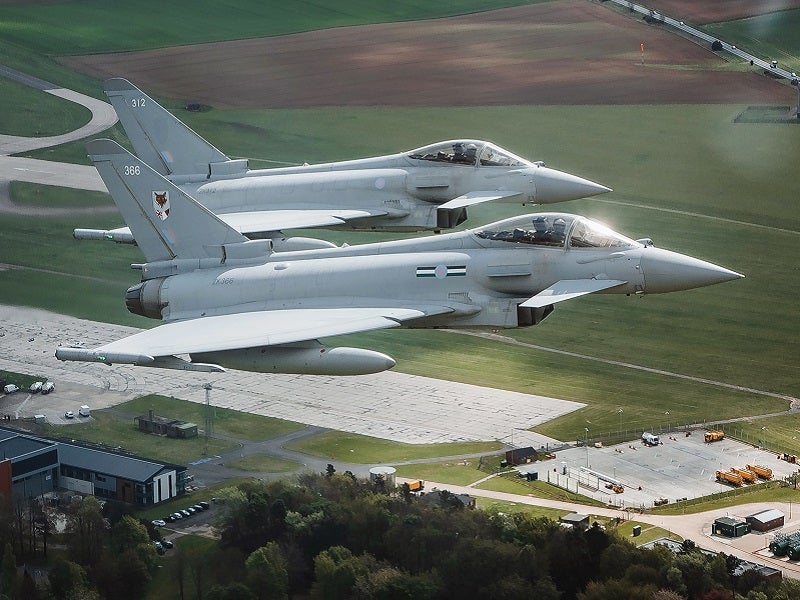
The ongoing war in Ukraine has demonstrated the military demands of operating in a contested environment, not least of which involves the air domain. Western countries such as the UK, coming off the back of two decades of permissive air access in counter-insurgency operations in Iraq and Afghanistan, could struggle to sustain themselves in a peer-to-peer conflict.
In 2021, the UK published its long-awaited Integrated Review into defence priorities, classifying Russia as a “strategic competitor” in the years ahead. The Integrated Review was followed up by the Defence Command Paper, which proposed a series of programmatical changes based on financial restrictions and emerging threats to reform the country’s military.
Speaking before the UK Defence Committee evidence-gathering session on aviation procurement on 28 June, Dr Sophy Antrobus, research fellow at the Freeman Air and Space Institute at King’s College London, and Justin Bronk, senior research fellow for airpower and technology at the Royal United Services Institute (RUSI), outlined the potential challenges that the UK faces.
One particular capability that would be required in a peer conflict with Russia, according to Bronk, would be the ability for the RAF’s air assets to operate in contested airspace, no small challenge given the difficulty that Moscow has experienced in its own efforts to suppress Ukrainian air defence systems.
“There are a couple of credible problems that [the Ukraine war] has thrown up for UK airpower, which has failed to have decisive effect for either side in the campaign. There will be a pressure on air to demonstrate why it would be different for a UK experience, rather than Ukraine or Russia where there was a mutual denial of air superiority,” Bronk said.
Agreeing with a UK assessment that Russia would be “an even greater threat” to European security even after the Ukraine war ends, Antrobus said that Europe may have to reassess the risks posed by failing to adapt to lessons being learned in the conflict.
How well do you really know your competitors?
Access the most comprehensive Company Profiles on the market, powered by GlobalData. Save hours of research. Gain competitive edge.

Thank you!
Your download email will arrive shortly
Not ready to buy yet? Download a free sample
We are confident about the unique quality of our Company Profiles. However, we want you to make the most beneficial decision for your business, so we offer a free sample that you can download by submitting the below form
By GlobalDataFighter forces
The UK maintains its Typhoon and F-35B multirole fighters as its primary combat air platforms, with the former comprised of 107 Tranche 2 and Tranche 3 aircraft. The Defence Command Paper took the decision to scrap the 53 older Trance 1 platforms, rather than seek an admittedly expensive upgrade.
Numbers of the fifth-generation short take-off, vertical landing (STOVL) F-35B stealth fighters are still growing, with 48 on contract and another 27 expected to be ordered bringing the total, accounting for a single attrition replacement following the loss of an aircraft in the Mediterranean Sea, to 76 platforms.
Meanwhile, the UK is developing a sixth-generation future combat aircraft, dubbed Tempest, which will gradually replace the Typhoon in the air defence role and has a targeted entry into service by the mid-2030s.
However, according to Bronk, the funds available to combat air programmes over the next ten years looked unlikely to be able to afford the development of such an advanced platform as Tempest, which would not benefit from the number of national partners and aircraft orders as did Typhoon.
Tempest, Bronk said, was “far more complex” than the 4.5 generation Typhoon platform and was being developed as part of a smaller consortium. France, Germany, and Spain are all committed to the European rival, the SCAF sixth-generation fighter programme, the latter two having been significant partners to the pan-European Eurofighter ‘Typhoon’ effort. “Costs [for Tempest] will be higher,” Bronk said.
Taking a singular focus that the aim for the UK RAF would be to penetrate, contest, and secure air superiority against a peer competitor such as Russia in the near future, Bronk was unequivocal as to what the plan should be.
“If you are asking me how I would equip in five years to fight the Russians, I would buy as many F-35s as a could,” Bronk told the committee.







